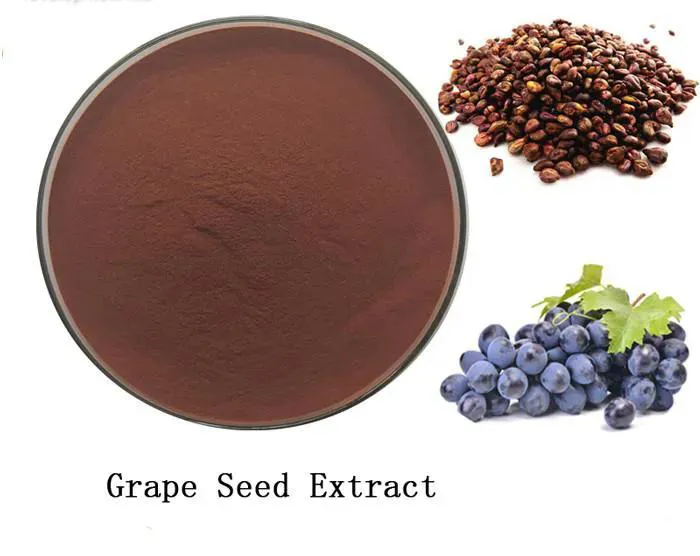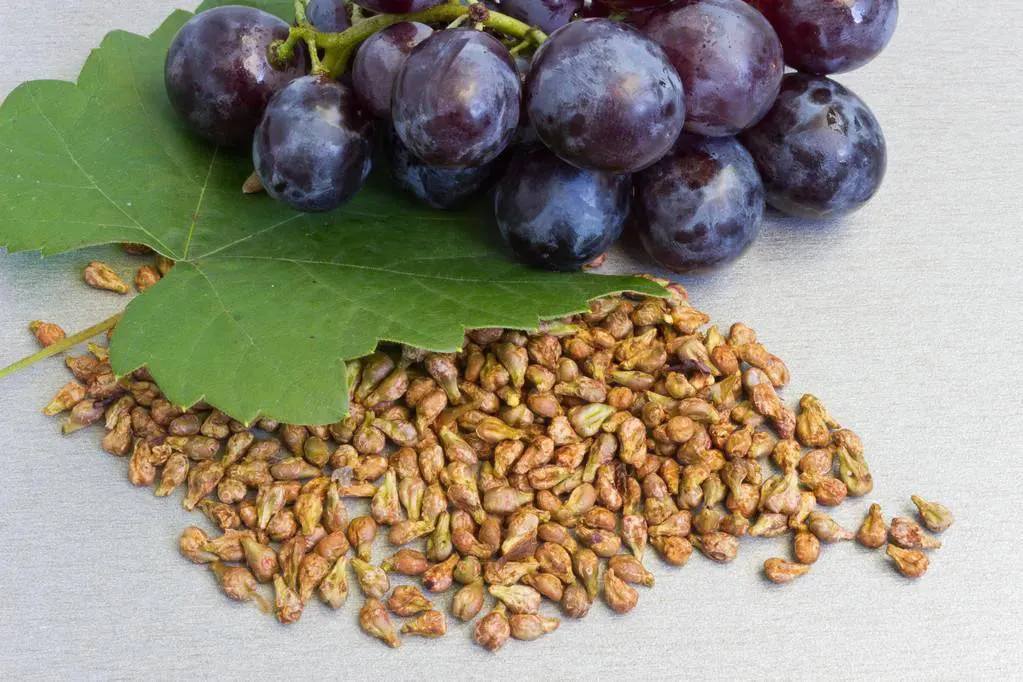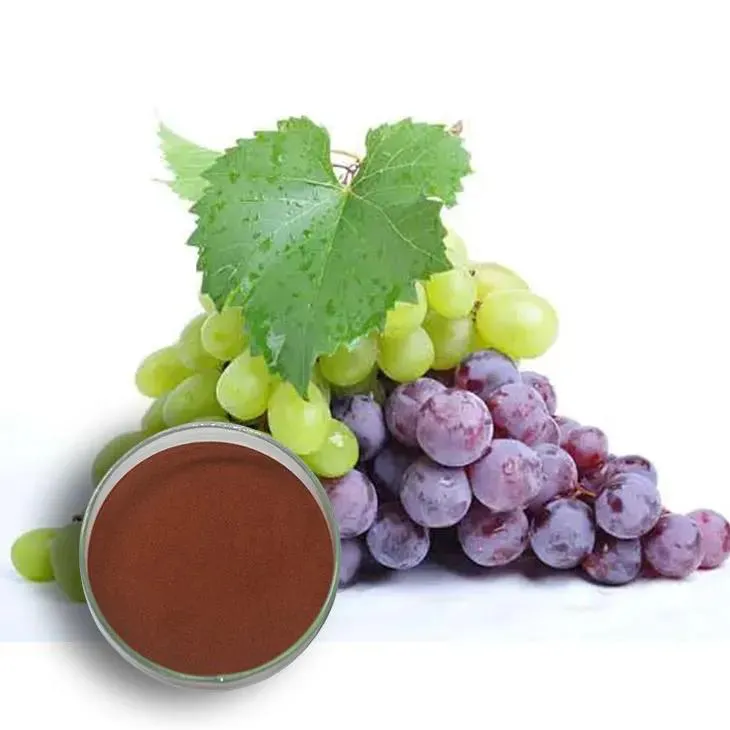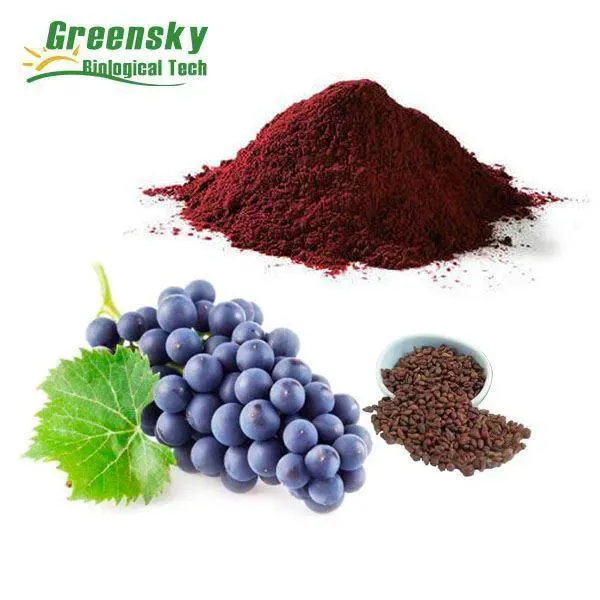- 0086-571-85302990
- sales@greenskybio.com
Unlocking the Potential of Grape Seed Extract in Glaucoma Management
2024-07-27

1. Introduction
Glaucoma is a leading cause of irreversible blindness worldwide. It is characterized by progressive damage to the optic nerve, often associated with elevated intraocular pressure (IOP). Current treatments mainly focus on reducing IOP through medications, laser therapy, or surgery. However, there is still a need for alternative or complementary therapies to better manage this complex eye disease. Grape Seed Extract (GSE) has emerged as a potential candidate in recent years due to its multiple beneficial properties.

2. Antioxidant Properties of Grape Seed Extract
2.1. Oxidative Stress in Glaucoma
Oxidative stress plays a significant role in the pathogenesis of glaucoma. Reactive oxygen species (ROS) are overproduced in glaucomatous eyes, which can damage various ocular tissues, including the retinal ganglion cells (RGCs). ROS can cause lipid peroxidation, protein oxidation, and DNA damage, leading to cell death. In glaucoma, the antioxidant defense mechanisms in the eye may be overwhelmed, making it vulnerable to oxidative damage.
2.2. Grape Seed Extract as an Antioxidant
GSE is rich in polyphenols, such as proanthocyanidins. These compounds have strong antioxidant activity. They can scavenge ROS, including superoxide anions, hydroxyl radicals, and peroxyl radicals. By neutralizing these harmful species, GSE can help reduce oxidative stress in the eye. In vitro studies have shown that GSE can protect ocular cells from oxidative damage induced by various agents. For example, it can prevent lipid peroxidation in cell membranes and preserve the integrity of cellular proteins and DNA.

3. Anti - Inflammatory Properties of Grape Seed Extract
3.1. Inflammation in Glaucoma
Inflammation is another important factor in glaucoma. It is associated with the activation of immune cells in the eye, such as macrophages and microglia. These cells can release inflammatory mediators, including cytokines and chemokines, which can further damage ocular tissues. Inflammatory processes can also disrupt the blood - retinal barrier, leading to increased permeability and fluid leakage, which may contribute to elevated IOP.
3.2. Grape Seed Extract's Anti - Inflammatory Effects
GSE has been shown to possess anti - inflammatory properties. It can inhibit the activation of inflammatory cells and the production of inflammatory mediators. For instance, GSE can reduce the levels of cytokines like interleukin - 1β (IL - 1β) and tumor necrosis factor - α (TNF - α) in the eye. It can also modulate the activity of transcription factors, such as nuclear factor - κB (NF - κB), which is involved in the regulation of inflammatory genes. By suppressing inflammation, GSE may help protect the ocular tissues from further damage in glaucoma.

4. Neuroprotective Properties of Grape Seed Extract
4.1. RGC Degeneration in Glaucoma
The loss of RGCs is a hallmark of glaucoma. These cells are responsible for transmitting visual information from the retina to the brain. In glaucoma, RGCs are gradually damaged and die, leading to visual field loss. The mechanisms underlying RGC degeneration are complex and involve multiple factors, including oxidative stress, inflammation, and excitotoxicity.
4.2. Grape Seed Extract for RGC Protection
GSE has demonstrated neuroprotective effects on RGCs. Its antioxidant and anti - inflammatory properties play a role in this regard. By reducing oxidative stress and inflammation, GSE can create a more favorable microenvironment for RGC survival. Additionally, GSE may directly interact with RGCs to promote their survival. Some studies have suggested that GSE can enhance the expression of neurotrophic factors, which are important for the growth and maintenance of neurons, including RGCs.

5. Influence on Intraocular Pressure
5.1. Mechanisms of IOP Regulation
IOP is regulated by a complex balance between the production and drainage of aqueous humor in the eye. Elevated IOP is a major risk factor for glaucoma. Current treatments aim to either reduce the production of aqueous humor or improve its drainage. GSE may influence IOP through multiple mechanisms.
5.2. Grape Seed Extract and IOP Reduction
Some research has indicated that GSE may have the potential to reduce IOP. It could act on the trabecular meshwork, which is an important structure for aqueous humor drainage. GSE may improve the function of the trabecular meshwork, increasing the outflow of aqueous humor. Additionally, GSE's anti - inflammatory properties may reduce the inflammation in the anterior chamber of the eye, which can also contribute to a more normal IOP level.
6. Clinical Implications and Future Directions
6.1. Current Clinical Evidence
Although pre - clinical studies have shown promising results regarding the potential of GSE in glaucoma management, the clinical evidence is still limited. Some small - scale clinical trials have been conducted, but more large - scale, well - designed studies are needed to confirm the efficacy and safety of GSE in human glaucoma patients.
6.2. Challenges and Considerations
There are several challenges in developing GSE as a treatment for glaucoma. One is the standardization of GSE products. Different sources and extraction methods may result in variations in the composition and potency of GSE. Another challenge is the determination of the optimal dosage and treatment duration. Moreover, potential interactions with other medications used in glaucoma treatment need to be carefully evaluated.
6.3. Future Research Directions
Future research should focus on further elucidating the mechanisms of action of GSE in glaucoma. Long - term clinical trials are required to assess its effectiveness in preventing the progression of glaucoma. Additionally, studies on the combination of GSE with existing glaucoma treatments could explore potential synergistic effects. Research on the development of more stable and bioavailable GSE formulations is also warranted.
7. Conclusion
In conclusion, grape seed extract shows great potential in glaucoma management due to its antioxidant, anti - inflammatory, and neuroprotective properties. It may influence intraocular pressure and protect retinal ganglion cells. However, more research, especially large - scale clinical trials, is needed to fully unlock its potential as a treatment option for glaucoma. With further investigation, GSE may offer a new and valuable approach in the fight against this debilitating eye disease.
FAQ:
What are the antioxidant properties of grape seed extract relevant to glaucoma management?
Grape seed extract contains polyphenols, such as proanthocyanidins, which are powerful antioxidants. In the context of glaucoma, these antioxidants can combat oxidative stress. Oxidative stress is often increased in glaucoma patients, and it can damage retinal ganglion cells. By neutralizing free radicals, the antioxidant properties of grape seed extract may help protect these cells from further damage, potentially slowing down the progression of glaucoma.
How does the anti - inflammatory property of grape seed extract contribute to glaucoma treatment?
Glaucoma is associated with inflammation in the eye. Grape seed extract has anti - inflammatory effects. It can inhibit the production of inflammatory mediators such as cytokines. By reducing inflammation, it may help improve the overall environment in the eye. This can potentially lead to a decrease in intraocular pressure, as inflammation can contribute to increased pressure. Additionally, it may also protect the retinal ganglion cells from the harmful effects of inflammation.
Can grape seed extract directly lower intraocular pressure?
While there is evidence suggesting that grape seed extract may have an impact on intraocular pressure, it may not directly lower it in a traditional sense. Its effects on oxidative stress and inflammation can indirectly influence the factors that regulate intraocular pressure. For example, by protecting the cells and tissues involved in the regulation of eye pressure, it may contribute to maintaining a more stable intraocular pressure. However, more research is needed to fully understand the relationship between grape seed extract and direct intraocular pressure reduction.
How does grape seed extract protect retinal ganglion cells?
As mentioned before, the antioxidant and anti - inflammatory properties of grape seed extract play important roles. The antioxidants in it can prevent oxidative damage to retinal ganglion cells. Oxidative damage can disrupt the normal function and survival of these cells. The anti - inflammatory effects can also protect the cells from the harmful effects of inflammation in the eye. Additionally, grape seed extract may have some neuroprotective mechanisms that are not fully understood yet, but which may enhance the survival and function of retinal ganglion cells.
Is it safe to use grape seed extract for glaucoma management?
Generally, grape seed extract is considered safe for consumption in moderate amounts. However, when considering its use for glaucoma management, it is important to consult a healthcare professional. Some people may be allergic to grape seed extract or may have underlying health conditions that could interact with it. Also, the quality and purity of the grape seed extract product need to be considered. While it shows potential in research, its safety and effectiveness in a clinical setting for glaucoma still require further investigation.
Related literature
- The Role of Antioxidants in Glaucoma: A Review"
- "Anti - Inflammatory Agents in the Treatment of Glaucoma: Current Perspectives"
- "Neuroprotective Strategies in Glaucoma: Grape Seed Extract as a Potential Candidate"
- ▶ Hesperidin
- ▶ Citrus Bioflavonoids
- ▶ Plant Extract
- ▶ lycopene
- ▶ Diosmin
- ▶ Grape seed extract
- ▶ Sea buckthorn Juice Powder
- ▶ Fruit Juice Powder
- ▶ Hops Extract
- ▶ Artichoke Extract
- ▶ Mushroom extract
- ▶ Astaxanthin
- ▶ Green Tea Extract
- ▶ Curcumin
- ▶ Horse Chestnut Extract
- ▶ Other Product
- ▶ Boswellia Serrata Extract
- ▶ Resveratrol
- ▶ Marigold Extract
- ▶ Grape Leaf Extract
- ▶ New Product
- ▶ Aminolevulinic acid
- ▶ Cranberry Extract
- ▶ Red Yeast Rice
- ▶ Red Wine Extract
-
Green coffee bean Extract
2024-07-27
-
Lotus leaf extract
2024-07-27
-
Cat Claw Extract
2024-07-27
-
Agaricus Blazei Extract
2024-07-27
-
Chia Seed Powder
2024-07-27
-
Maca Extract
2024-07-27
-
Sea buckthorn oil
2024-07-27
-
Ginger Extract
2024-07-27
-
Honeysuckle Pollen
2024-07-27
-
Giant Knotweed Extract
2024-07-27





















